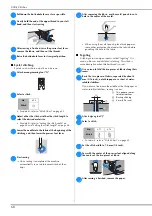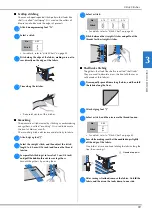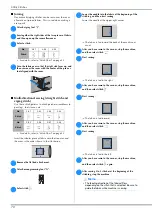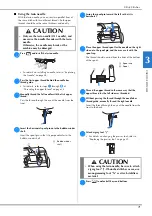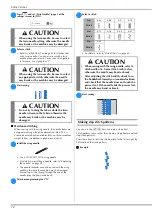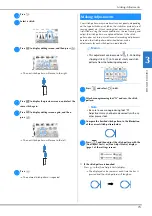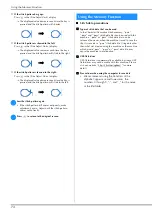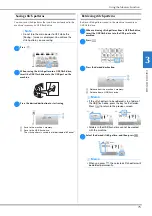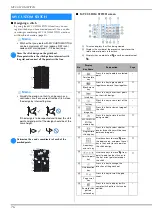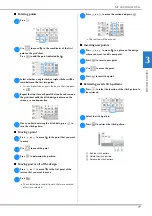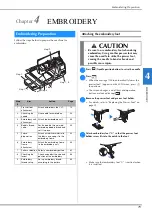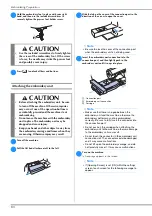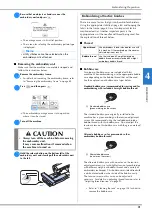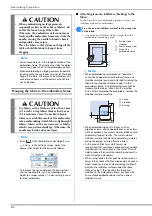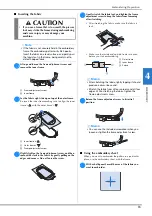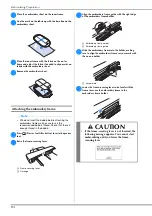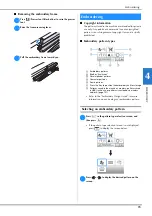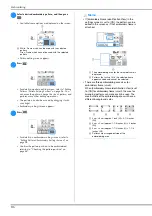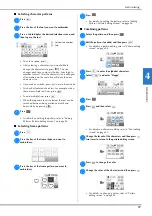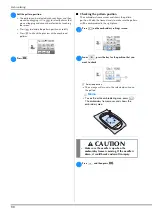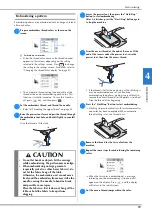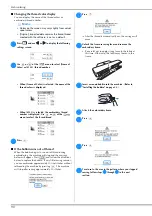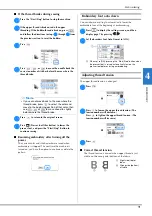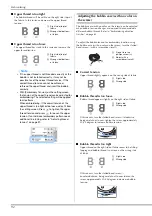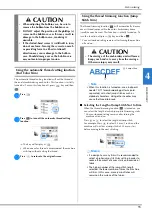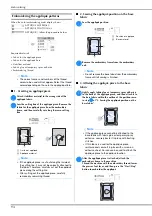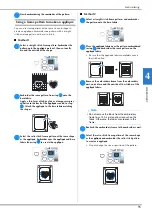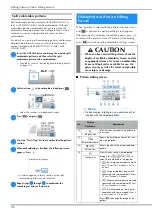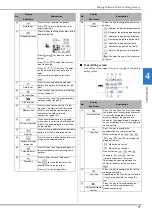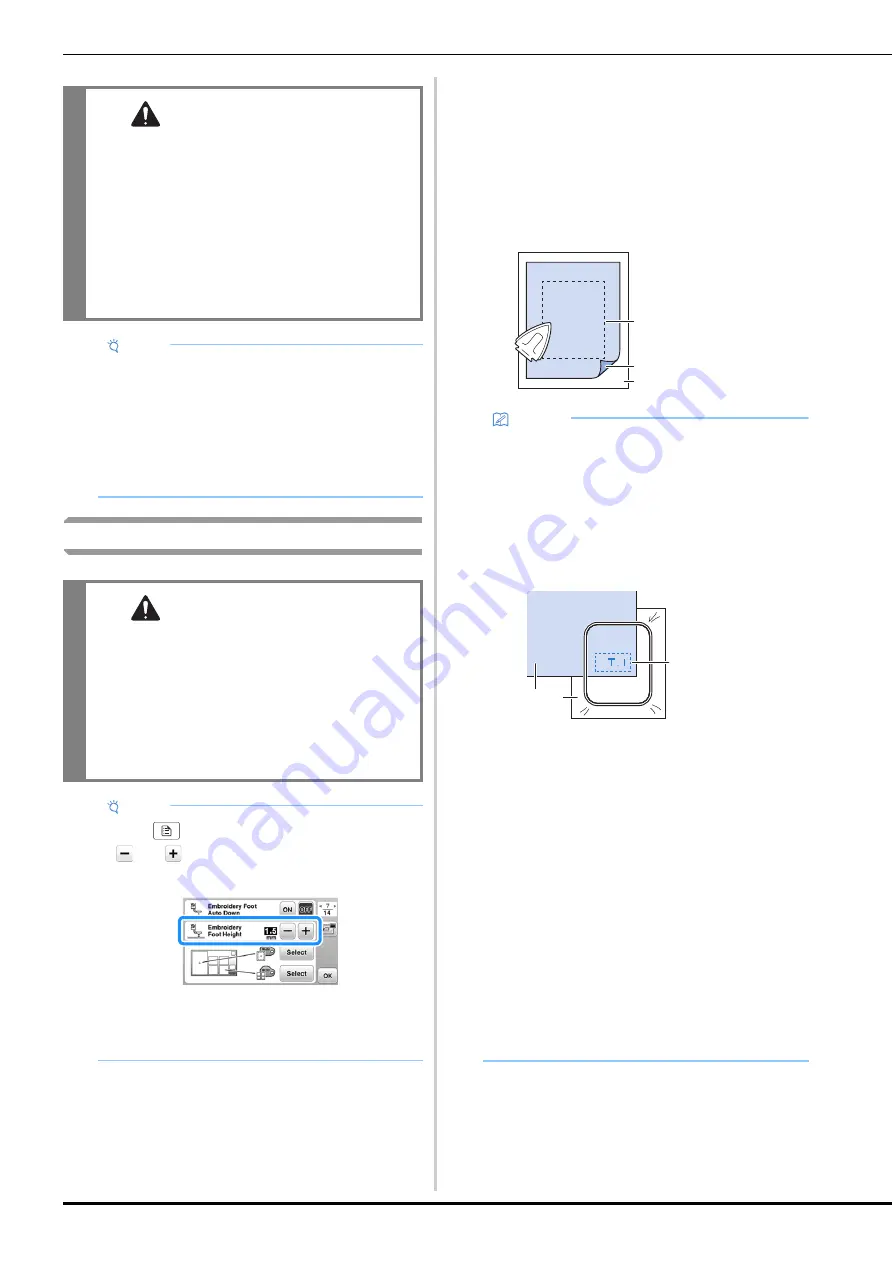
Embroidering Preparation
82
Hooping the fabric in the embroidery frame
■
Attaching iron-on stabilizers (backing) to the
fabric
For best results in your embroidery projects, always use
stabilizer material for embroidery.
a
Press the iron-on stabilizer material to the wrong side
of the fabric.
• Use a piece of stabilizer which is larger than the
embroidery frame being used.
CAUTION
• When embroidering on large garments
(especially jackets or other heavy fabrics), do
not let the fabric hang off the table.
Otherwise, the embroidery unit cannot move
freely and the embroidery frame may strike the
needle, causing the needle to bend or break
and possibly cause injury.
Place the fabric so that it does not hang off the
table or hold the fabric to keep it from
dragging.
Note
• Do not leave objects in the range of motion of the
embroidery frame. The frame may strike the object
and cause a poor finish to the embroidery pattern.
• When embroidering on large garments (especially
jackets or other heavy fabrics), do not let the fabric
hang off the table. Otherwise, the embroidery unit
cannot move freely, and the pattern may not turn
out as planned.
CAUTION
• Use fabrics with a thickness of less than 2 mm
(1/16 inch). Using fabrics thicker than 2 mm
(1/16 inch) may cause the needle to break.
• Always use a stabilizer material for embroidery
when embroidering stretch fabrics, lightweight
fabrics, fabrics with a coarse weave, or fabrics
which cause pattern shrinkage. Otherwise, the
needle may break and cause injury.
Note
• Press
. In the [Embroidery Foot Height], use
and
in the settings screen. Adjust the
presser foot height for thick or puffy fabrics.
• To increase the space between the presser foot
and the needle plate, set the embroidery foot
height to a larger number, 1.5 mm setting is used
for most embroidery.
1
Fusible side of
stabilizer
2
Fabric (wrong side)
3
Size of the
embroidery frame
Memo
• When embroidering small pieces of fabric that
cannot be hooped on an embroidery frame, use
stabilizer material as a base. After lightly ironing the
fabric to the stabilizer material, hoop it in the
embroidery frame. If stabilizer material cannot be
ironed onto the fabric, attach it with a basting
stitch. After completing the embroidery, remove the
stabilizer material carefully.
• When embroidering on thin fabrics such as
organdy or lawn, or on napped fabrics such as terry
cloth or corduroy, use water soluble stabilizer (sold
separately) for best results. The water soluble
stabilizer material will dissolve completely in water,
giving the project a more attractive finish.
• In the case of thick terry cloth towels we
recommend that you place a piece of water soluble
stabilizer on the top surface of the towel. This will
help to reduce the nap of the toweling and result in
more attractive embroidery.
• When using fabrics that cannot be ironed (such as
terry cloth or fabrics that have loops which expand
when ironed) or in places where ironing is difficult,
position the stabilizer material under the fabric
without fusing it, then position the fabric and
stabilizer in the embroidery frame, or check with
your authorized Brother dealer for the correct
stabilizer to use.
b
c
a
1
Fabric
2
Stabilizer
3
Basting
a b
c
Содержание 888-G30
Страница 2: ......
Страница 80: ...MY CUSTOM STITCH 78 ...
Страница 121: ......
Страница 122: ......
Страница 123: ......

